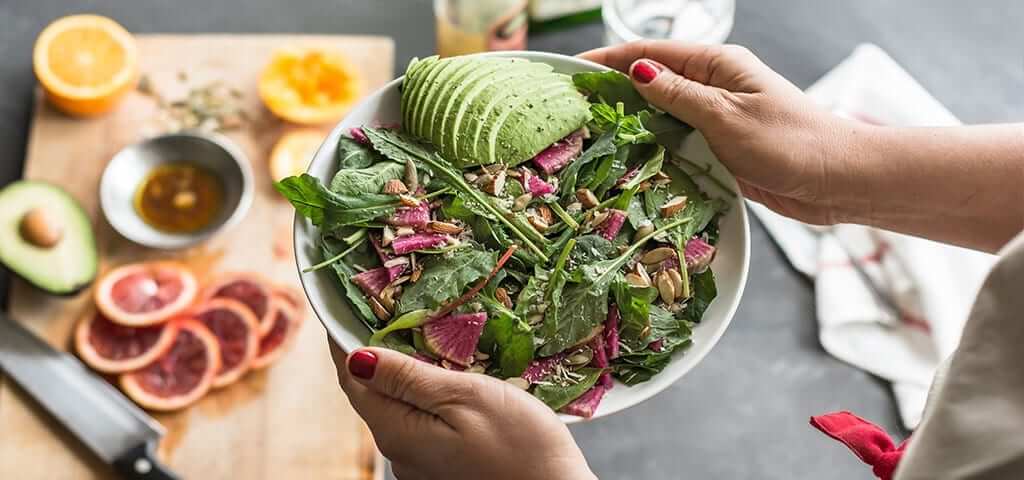As diabetes rates continue to increase worldwide, people are learning how healthy lifestyle changes can improve blood sugars and lower complication risks. A balanced eating plan can lower your blood sugar, improve your mood, and boost your energy levels. Discover how to eat healthy for diabetes.
Why Eat Healthy?
People often fear that eating healthy means giving up everything they enjoy. They are afraid they will be eating only bland food and will always feel hungry. This is a myth, as there are plenty of healthy foods that won’t make you feel deprived. Many foods are allowed on a healthy plan and watching portion sizes are more important. When you eat healthy you are taking control of your life and general health. Losing 5 to 10 percent of your body weight can help reduce your blood sugar, as well as your cholesterol levels and blood pressure. Healthy foods can boost your mood and energy levels, which are important factors for people with diabetes.
Who Should Eat Healthy?
People who are apple-shaped, with weight lingering around the abdomen are at a higher risk of developing diabetes. Belly fat is linked to insulin resistance and higher blood sugars. Other risk factors for developing diabetes are being over 40, having a family history, being sedentary and being of Latin, Black, Asian or American Indian decent. Minimizing your intake of sugary foods can help you shed weight around your middle section and reduce diabetes-related risks. Avoid empty calories in foods such as energy drinks, soda, sugary cereals, and processed foods including cake, cookies, muffins, and doughnuts. Granola bars or granola cereals can also contain too much sugar so always read the labels before you make a decision.
Really, Everyone Should Eat Healthy
A food plan that is healthy for people with diabetes is actually good for everyone. It is not necessarily “special” for those who have diabetes. Your goal is to develop an eating plan that is low in saturated fat and added sugar and high in nutrients. It is also important to watch your total calorie intake by eating small portions and be aware of carbohydrate foods that always turn completely into sugar. You don’t need to avoid carbohydrates, but you should choose healthier ones such as whole grains, beans and vegetables. Brown rice has more nutrients and fiber than white rice. Sweet potatoes are a better choice than white ones. Steel-cut oats should be eaten instead of instant oatmeal with added sugar. Achieving balance is essential. If you want to indulge on a weekend or holiday, remember to just take a taste. Have one spoonful of gravy, one cookie or one cocktail. Overindulging is what causes problems.
Healthy Eating Plans
Consider following heart-healthy diets since heart disease and diabetes are closely associated such as the Mediterranean Diet. Include fish, olive oil, vegetables, nuts and only red wine if you drink. Avoid high protein diets as studies have shown they can actually lead to insulin resistance and may affect the kidneys. The DASH diet has been suggested for those who have hypertension or diabetes. The glycemic index (GI) may help you learn how different foods affect your blood sugars. The GI encourages you to eat foods that take longer to digest. This helps you avoid blood sugar spikes and feel fuller longer. Choose whole foods over processed foods, such as fresh fruit rather than fruit juice. Try to avoid foods that are high in salt, saturated fat or trans fat, such as deep-fried foods and processed meats. Opt for the healthy fats found in olive oil, and avocados. Choose quality protein, such as the kind found in eggs, lean meats and beans. Get heart-healthy omega-3s from foods such as salmon and tuna.
Food Label Reading
Learn how to read food labels so you can avoid ones that are high in salt, sugar, calories, and fat. Know some of the other terms for sugar, which could be hiding in foods you thought were healthy. These terms include molasses, agave, brown sugar, honey, high-fructose corn syrup, dextrose, maltose, malt syrup and lactose.
Food Journaling
Keep a food journal to review your intake daily. Monitor how often you make poor choices and rejoice in your victories. Be clear on portion sizes. For example, one portion of meat is usually no larger than the palm of your hand. A carbohydrate serving is one slice of bread. Portion plates can help you determine the right amount of whole grains, fruits and vegetables and protein to eat at each meal. Include at least a half hour of exercise into each day, such as walking or biking. It takes more than a healthy diet to achieve total success. Work with a diabetes nurse educator or dietitian to help you learn more about how to eat healthy for diabetes.
The common phrase that states “you are what you eat” holds true for people with diabetes. Choose whole foods and avoid processed foods that contain too much sugar, fat, salt, and calories. Get adventurous and discover how eating healthy for diabetes can make you feel great.







Leave A Comment